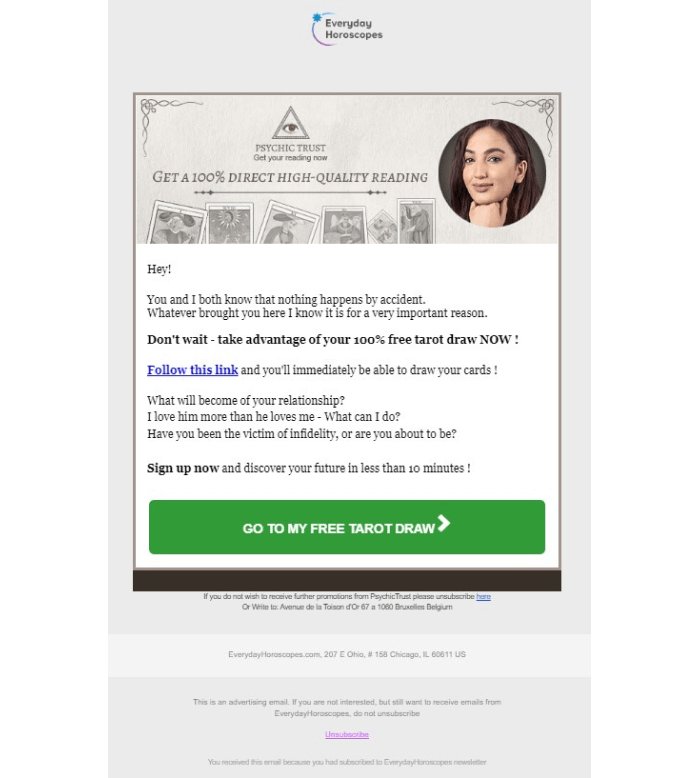Monetization Options Inside and Outside of an Email
Learn a few ideas of meaningful monetization methods that your business can use.


If you run a business, you might have set up a website for it. And on that website, you might also have a subscription form that has already built an extensive email list. If all of that is true for you, you might already be holding the key – or keys – to a decent amount of additional income. You just need to find the doors that these keys can help you unlock. Below, you will find a few ideas of meaningful monetization methods that your business can use.
Affiliate Email Marketing
An affiliate email marketing campaign is the promotion of affiliate products through an email sequence you send to your audience. People who have already spent some time on your mailing list consider you a reliable source of information. They are very likely to welcome promotions and offers in your emails, especially those related to your main product or service. Affiliate email marketing can help generate a decent additional revenue inflow. There are several methods of compensation for affiliate marketing efforts:
- Pay-per-Click: you’ll receive a commission each time someone from your email list clicks on the link in the affiliate email.
- Pay-per-Lead: each time someone from your email list visits the affiliate’s landing page and leaves their contact details.
- Pay-per-Sale: as the name suggests, you’ll receive a commission for each sale that starts with someone clicking on the affiliate link in your email.
This monetization option is definitely lucrative. But you need to remember: the success of an affiliate email campaign hinges on trust, so before you join an affiliate program, you need to win your audience over.
Let’s take a look at an affiliate promotional email sent by EverydayHoroscopes. An offer from the Diablo advertising network was arranged in a typical template the company uses and sent across the list in September.


The results of both campaigns look solid:

Ads In Emails
This monetization option is also based on trust. When people sign up to receive emails from your business, they usually do it consciously. And if they stay on your list, it means that they trust you and the content that you deliver to their inboxes, advertisements included. In fact, according to a study by PowerInbox, 67% of adults will click on an ad sent to them by someone they trust.
Ads in emails are not affected by the GDPR-related limitations. Email newsletters are always opt-in, so people give their permission to see marketing messages from your business. Moreover, ad blockers will not affect ads in your emails either, even in webmail programs, allowing for greater visibility.
Email addresses are also personal. Nobody shares them like, say, a Netflix account. So, the patterns linked to an email address will most certainly be based on a single person’s behavior and interests. And this is exactly why delivering ads within an email newsletter allows for more precise targeting. Plus, senders offer multiple tools to help you choose the ads shown in your emails. You can favor certain ad types and categories and block others to make sure your customer won’t be upset by what they see in your emails.
PowerInbox Ad Content
PowerInbox has a recommendation engine that chooses which of the ads will be shown to each individual recipient in real time. The choice can be based on their device type or the time when they open the email. Even the history of the recipient’s activity is taken into account! The combination of these factors, plus the custom settings applied by the sender, helps Powerinbox serve ads with great monetization potential.
And another thing: you can customize the way PowerInbox ads fit into your email content. Place them against a background to make them stand out or blend them with other content blocks in the email. You can also set the number of ads in a single newsletter or choose where exactly they will be placed, depending on whether the email is meant to make revenue from ads or emphasize a certain piece of content.
Take a look at an example of PowerInbox ads used in email content:

The corresponding email campaign was sent by DailyHoroscope, an astrological project, from September 1 to 30, 2022. And here are the impressive stats:

And here’s a case of PowerInbox ad use from EverydayHoroscopes, another astrological project. The timeline is the same: from September 1 to 30, 2022, and the results are just as inspiring:


LiveIntent Emails Ads
Similar to PowerInbox, LiveIntent enables you to choose the ads you want to serve to your subscribers inside your emails. However, a more convenient approach is to rely on the platform to automatically select the ads for your content emails, using complex ML algorithms and data analysis, and apply certain safeguards and controls manually, e.g., blocking undesirable ad categories. This way, it can ensure that ads are targeted individually, based on your subscribers’ interests and actions, which allows you to earn more revenue and reduce customer annoyance.
Let’s take a look at an example of LiveIntent ad placement inside content emails. TriviaBuzz is an umbrella project that embraces several themed quiz-based games. Two of them – PatrioticQuiz and TrainYourBrain – embedded LiveIntent ads into the regular emails sent. To put the stats into perspective, we used the same period: September 1 to 30.



Ads Outside Emails
If you want to reach beyond your contact list potential and monetize all the visitors that your website gets on a daily basis, even those who skip your emails and enter your pages directly, Google AdSense might be the choice for you.
Google AdSense is a network that operates the most expansive database of advertisers and ads, choosing the most suitable ones for your ad space: text, images, videos, interactive ads, etc. It will match ads to your content and your customers’ interests, and you, in turn, can block unwanted ad categories, just as you do with ads in emails, to ensure you maintain the trust you built with your emails.
You can also choose the best place for the ad on your pages and be sure that it always fits because the ad size will automatically adapt to the device your visitors use. It will increase visibility and improve click rate, thus growing your bottom line.
And – this sounds quite surprising – you can use Google AdSense to monetize your website visitors for free! Of course, you will have to comply with eligibility requirements first, and this will not be an easy task. But the result will be worth the effort.
Just take a look at these figures:

This is the revenue DailyHoroscope received thanks to Google AdSense ads served on their main page from September 1 to September 30, 2022:

Now that we reviewed monetization options inside and outside of email, we can conclude that there are quite a lot of them and your business can use some – or maybe even all of the options listed above – to make impressive additional revenue. Keep experimenting with ad placement, networks, affiliates, categories, frequency, and so on – and you will definitely find that door (or doors) that will lead your business to success.
Over to you
Would you like to learn more about InboxSuite CLV tool and apply it in your email marketing program? Get in touch with our team of experts and see how we can help! Book a demo today.
Read also
Black Friday email strategies, tactics, and tips to try in 2022
There is one great certainty in life: Black Friday will come around every year, and it will be here faster than you imagine. As the largest sale event of the year, it is a huge opportunity for marketers - especially when it comes to the email strategy. How not to miss it and use it wisely? What results should I expect? What types of emails perform best? Should I use automation? Is there technology that can improve my Black Friday efforts? How should a perfect email be designed? How to write a good email subject line? On the Black Friday eve, you may ask yourself many questions. The InboxSuite team provides answers and presents best strategies, tactics, and tips for the best selling event of the year.
7 Ways to Increase Results Using Artificial Intelligence
Artificial intelligence’s rapid development made this technology accessible to many industries and professionals, including marketers. Introducing AI to your email marketing activities is now easier than you think. Let’s dive in and learn more about how you can improve your email marketing results with the help of AI.
How Can Using AI in Email Marketing Help You Tackle Apple’s Privacy Changes with iOS 15?
For the last month, the most popular discussion topic in the email marketing community are Apple’s latest privacy updates. How will this change affect email marketing programs? Is it another apocalypse time for email? What can email marketers do to prepare and how can AI help us evolve our email marketing program? We’ll have a deep dive into the topic, bring you suggestions from experts, and help you become bulletproof for any regulation updates. Buckle up!
 Resources
Resources


